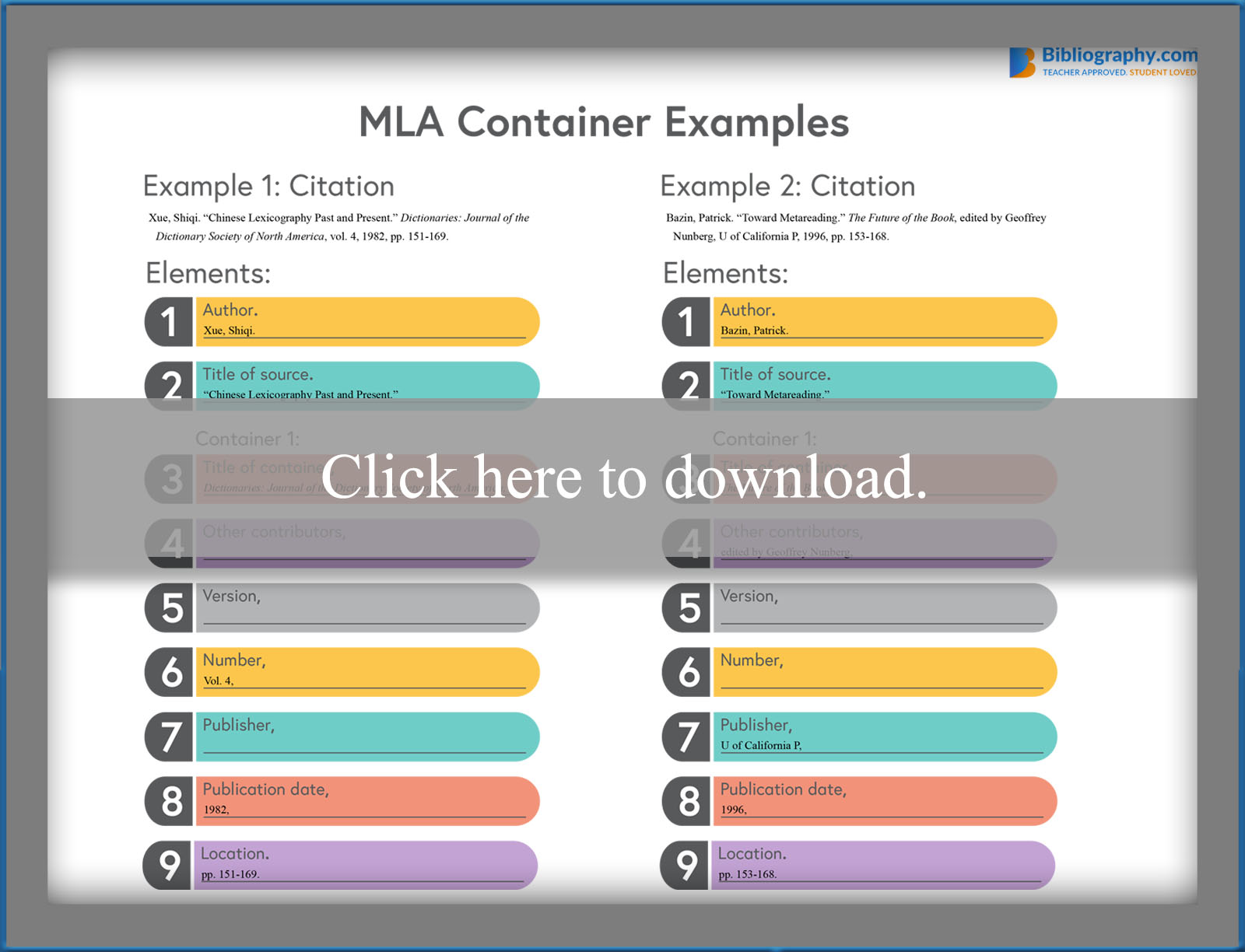As you learn about using MLA 8 for citing your sources, you’ll notice the term “container” being used. You may wonder what that means for you as you create your works cited page. There’s a simple reason why MLA format developed the container style.
While updating the MLA Handbook, the editors realized they needed to create an easier way to format entries. Since information is found in so many sources and methods now, such as videos and podcasts, users need a way to create and cite their sources easily.

MLA Core Elements
MLA citation style uses nine core elements to create a bibliographical entry. The third to nine elements describe the information that makes up the container. This container shows the reader where to find the source. You’ll notice that the third core element is the title of the container and the following core elements describe that container.
For example, you may wish to cite a newspaper article. In this case, you will list the author and title (the first two core elements). Then, you’ll describe where you found this article in the container beginning with the third element. The title of the container is the name of the newspaper. Include any other identifying elements in the proper order.
Cotter, Hollard. “Behind the Camera, a Painter in Light.” New York Times, 21 Mar. 2015, p. C24.
Nesting an MLA Container

You may need to “nest” the containers of your source as well. What does this mean?
You may find a journal article originally published in a print journal, but you found it online in a database. In this case, you’ll need to include the database information in a second container. This is where the flexibility of citing using MLA containers comes in handy. Since information can be found in many places, it makes it easy to add online sources.
Why do you need to tell your reader where you found your source? One copy of a work may differ from another. For example, page numbers may change on an e-book or journal. Or, it may have been edited to fit publication requirements for space.
Simple Citations
The MLA container system provides a simple way to create your cited sources in your works cited page. Once you get the hang of using it, you’ll see how easy it is to use.

